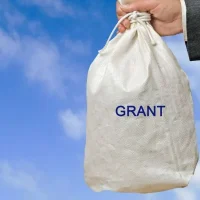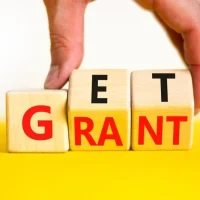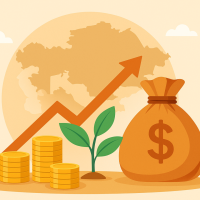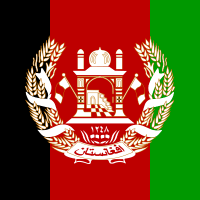In the ever-evolving landscape of nonprofit fundraising, the integration of technology has become paramount. Fundraising analytics tools are designed to empower organizations by providing insights into donor behavior, campaign performance, and overall fundraising effectiveness. These tools enable NGOs to make data-driven decisions, optimize their strategies, and ultimately enhance their fundraising outcomes.
By harnessing the power of analytics, nonprofits can identify trends, measure the impact of their initiatives, and tailor their approaches to meet the needs of their supporters. The importance of fundraising analytics cannot be overstated. With the right tools, organizations can track key performance indicators (KPIs) such as donor retention rates, average gift sizes, and campaign conversion rates.
This data not only helps in understanding what works and what doesn’t but also aids in forecasting future fundraising efforts. For instance, if an NGO notices a significant drop in donor engagement during a specific campaign, they can analyze the data to pinpoint the cause and adjust their strategy accordingly. By leveraging these insights, nonprofits can enhance their outreach efforts, build stronger relationships with donors, and ultimately drive more successful fundraising campaigns.
Donor Management and Relationship Tools
Effective donor management is crucial for any nonprofit organization aiming to build lasting relationships with its supporters. Donor management tools streamline the process of tracking donor information, interactions, and contributions. These platforms allow NGOs to maintain comprehensive databases that include contact details, donation history, and engagement levels.
By centralizing this information, organizations can easily segment their donor base and tailor their communication strategies to different groups. For example, a nonprofit focused on environmental conservation might use donor management tools to identify major donors who have contributed significantly over the years. By analyzing their giving patterns and preferences, the organization can create personalized outreach campaigns that resonate with these supporters.
Additionally, these tools often include features for automating thank-you messages and follow-ups, ensuring that donors feel appreciated and valued. This level of engagement not only fosters loyalty but also encourages repeat donations, which are vital for sustaining an NGO’s mission.
Data Visualization and Reporting Tools
Data visualization and reporting tools play a critical role in transforming complex data sets into easily digestible insights. For nonprofits, these tools can help illustrate the impact of their work through compelling visuals that resonate with stakeholders. By presenting data in charts, graphs, and infographics, organizations can effectively communicate their achievements and challenges to donors, board members, and the community at large.
For instance, a nonprofit focused on education might use data visualization tools to showcase improvements in student performance as a result of their programs. By creating visually appealing reports that highlight key metrics—such as graduation rates or test scores—NGOs can effectively demonstrate their impact and attract further funding. Moreover, these tools often come equipped with customizable templates that allow organizations to create professional-looking reports without requiring extensive design skills.
This capability not only saves time but also enhances the credibility of the organization in the eyes of potential funders.
Peer-to-Peer Fundraising Platforms
Peer-to-peer fundraising platforms have revolutionized the way nonprofits engage their supporters in fundraising efforts. These platforms empower individuals to create their own fundraising campaigns on behalf of an organization, leveraging their personal networks to raise money for a cause they are passionate about. This approach not only expands the reach of fundraising efforts but also fosters a sense of community among supporters.
For example, a health-focused NGO might encourage its supporters to participate in a charity run by setting up individual fundraising pages. Each participant can share their page with friends and family, soliciting donations while raising awareness for the cause. This method not only increases overall contributions but also allows for personal storytelling, which can be a powerful motivator for potential donors.
By utilizing peer-to-peer fundraising platforms, nonprofits can tap into new networks of supporters and create a more engaged donor base.
Event Management and Ticketing Tools
Events are a cornerstone of many nonprofit fundraising strategies, providing opportunities for organizations to connect with supporters while raising funds for their missions. Event management and ticketing tools simplify the planning and execution of fundraising events by offering features such as online ticket sales, attendee registration, and event promotion. These platforms enable NGOs to manage logistics efficiently while maximizing attendance and revenue.
For instance, a nonprofit hosting a gala dinner can use event management tools to create an online registration page where attendees can purchase tickets directly. These platforms often include options for sponsorship packages, allowing businesses to support the event while gaining visibility within the community. Additionally, many event management tools provide analytics post-event, enabling organizations to assess attendance rates, revenue generated, and donor engagement levels.
This data is invaluable for planning future events and refining strategies to enhance overall fundraising success.
Marketing and Communication Tools
In today’s digital age, effective marketing and communication are essential for nonprofits seeking to engage donors and raise awareness about their causes. Marketing tools help organizations craft compelling messages that resonate with their target audiences while communication tools facilitate ongoing engagement with supporters. Together, these resources enable NGOs to build strong relationships with donors and keep them informed about the organization’s activities.
For example, an animal rescue organization might use email marketing software to send regular updates about rescued animals and upcoming adoption events. By sharing heartwarming stories and impactful visuals, they can inspire donors to contribute financially or volunteer their time. Social media management tools also play a crucial role in this process by allowing organizations to schedule posts, track engagement metrics, and interact with followers across various platforms.
By leveraging these marketing and communication tools effectively, nonprofits can create a cohesive narrative that keeps supporters engaged and motivated to contribute to their mission. In conclusion, the integration of technology into fundraising strategies has transformed how nonprofits operate in today’s competitive landscape. From analytics tools that provide actionable insights to donor management systems that foster relationships, each resource plays a vital role in enhancing fundraising success.
By embracing these technologies—whether through peer-to-peer platforms or event management solutions—NGOs can optimize their efforts and ultimately achieve greater impact in their communities. As the nonprofit sector continues to evolve, staying informed about these tools will be essential for organizations looking to thrive in an increasingly digital world.








































